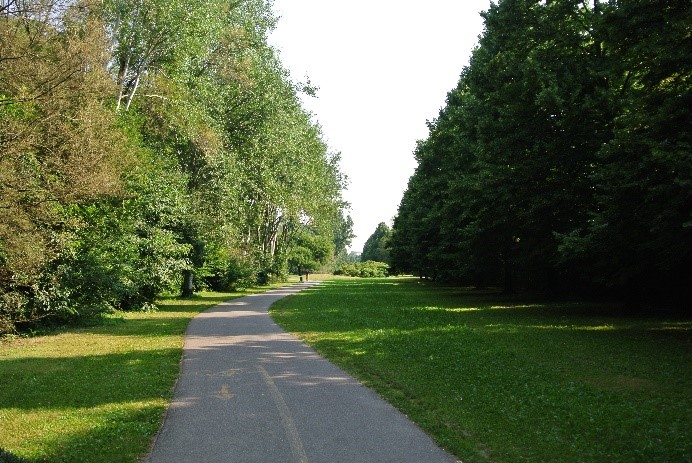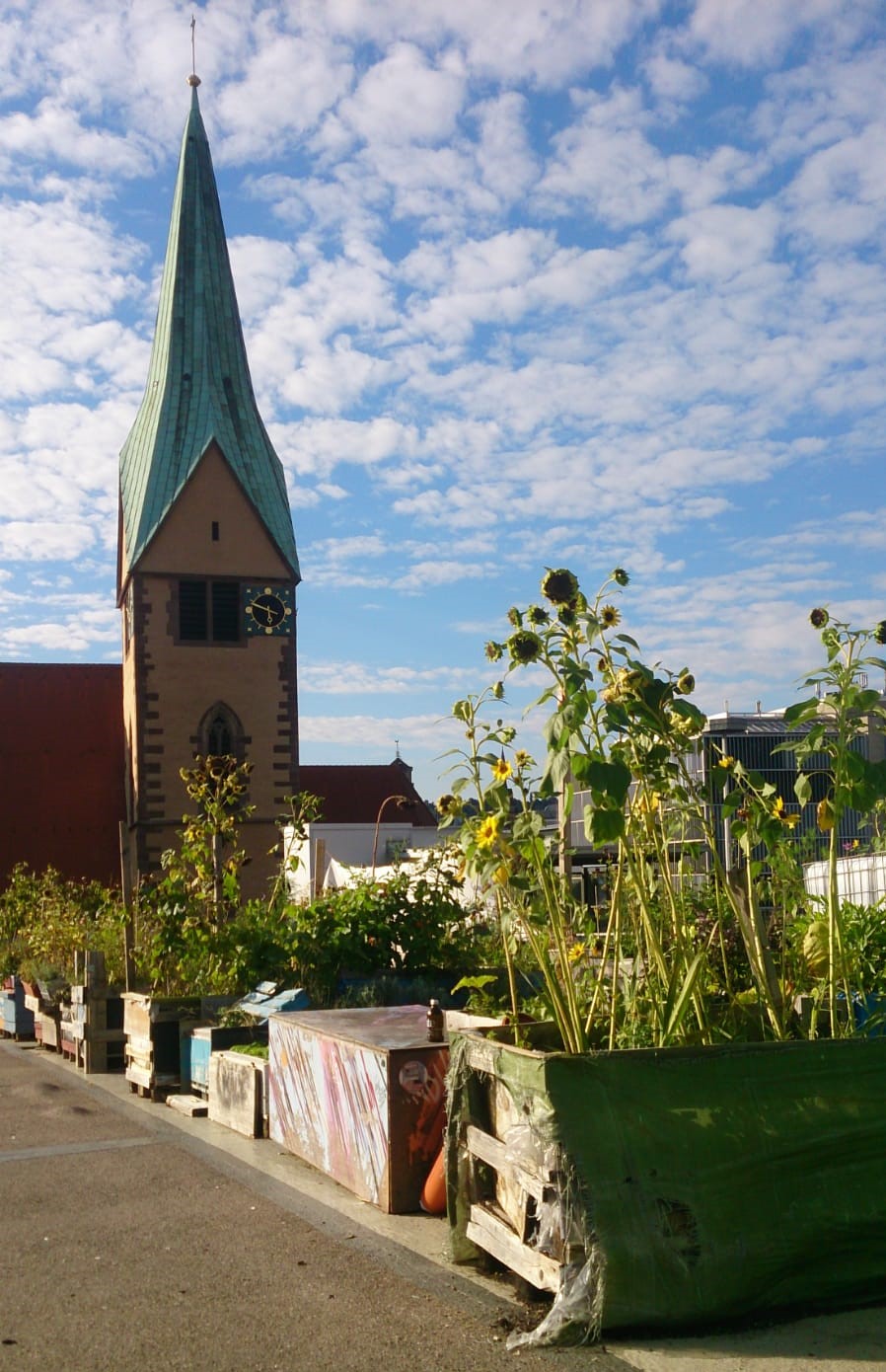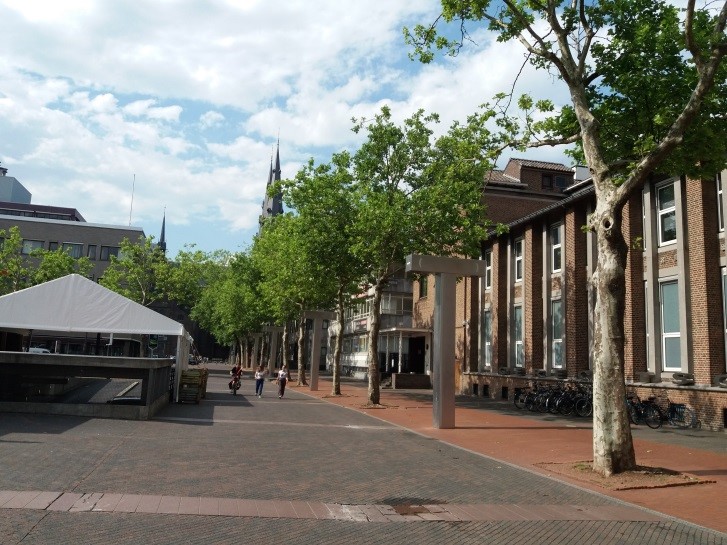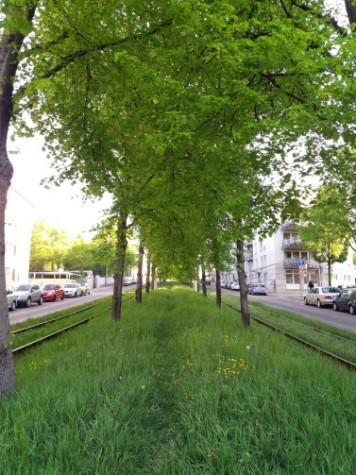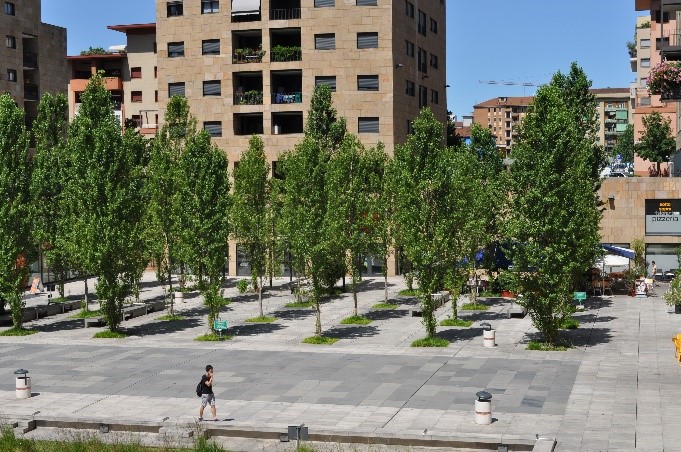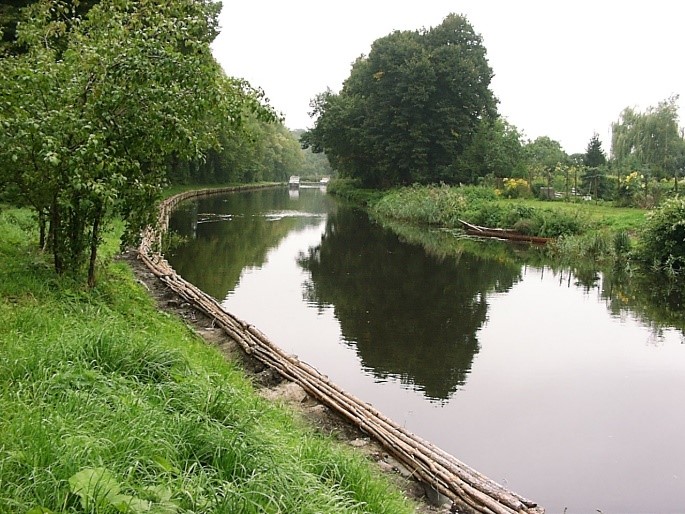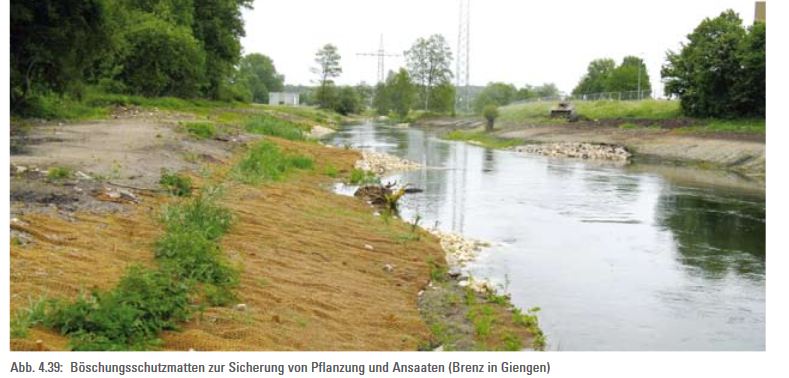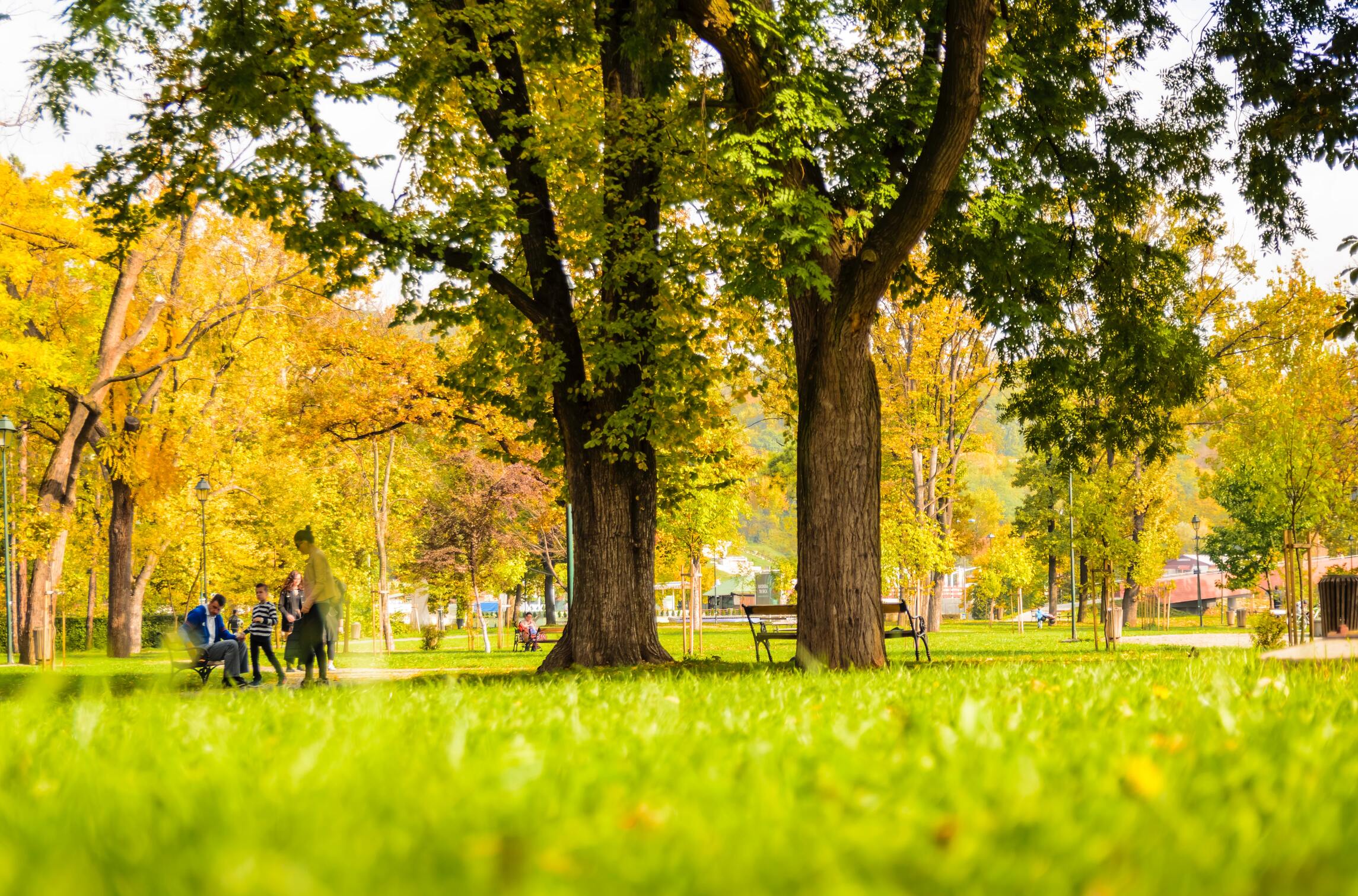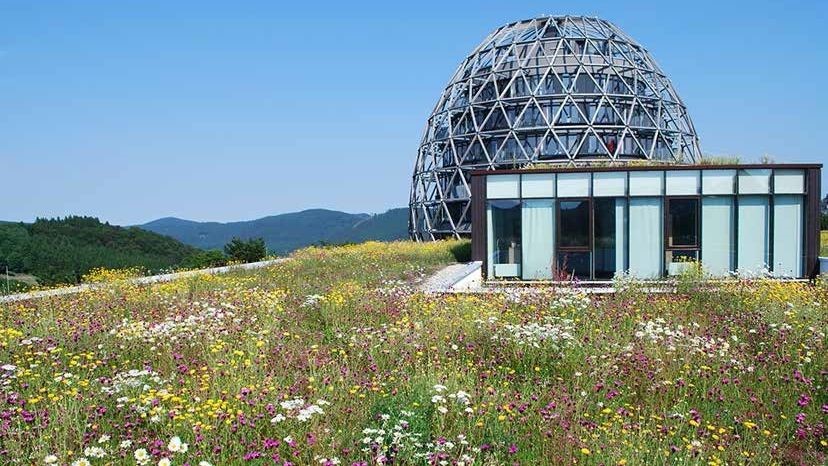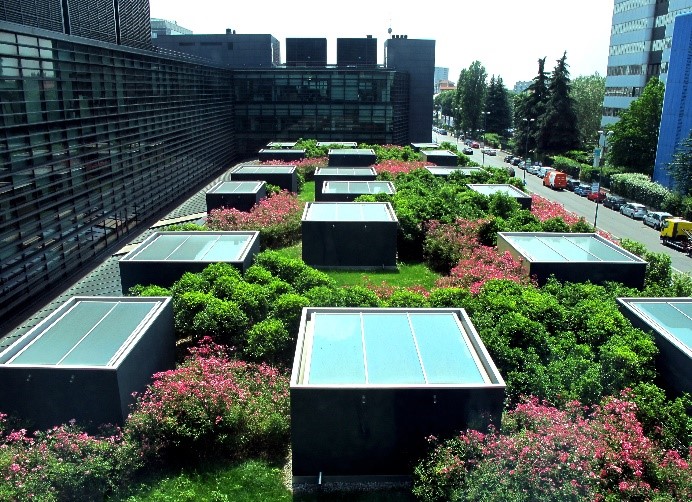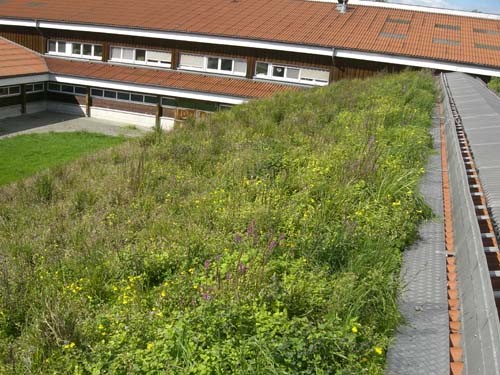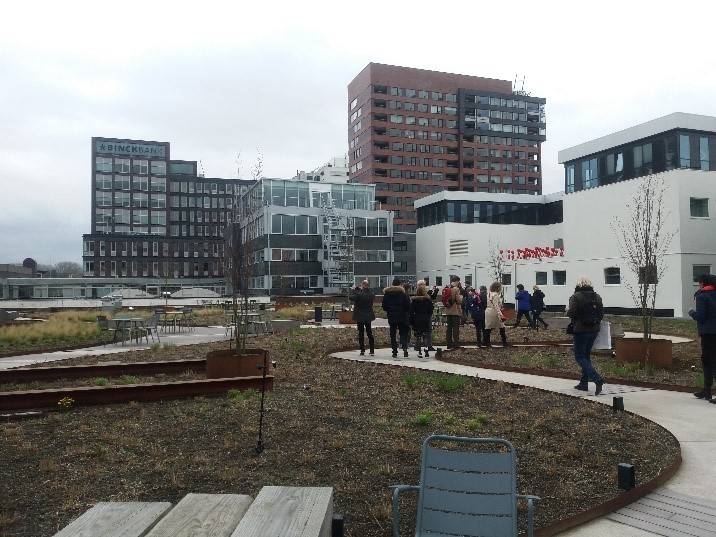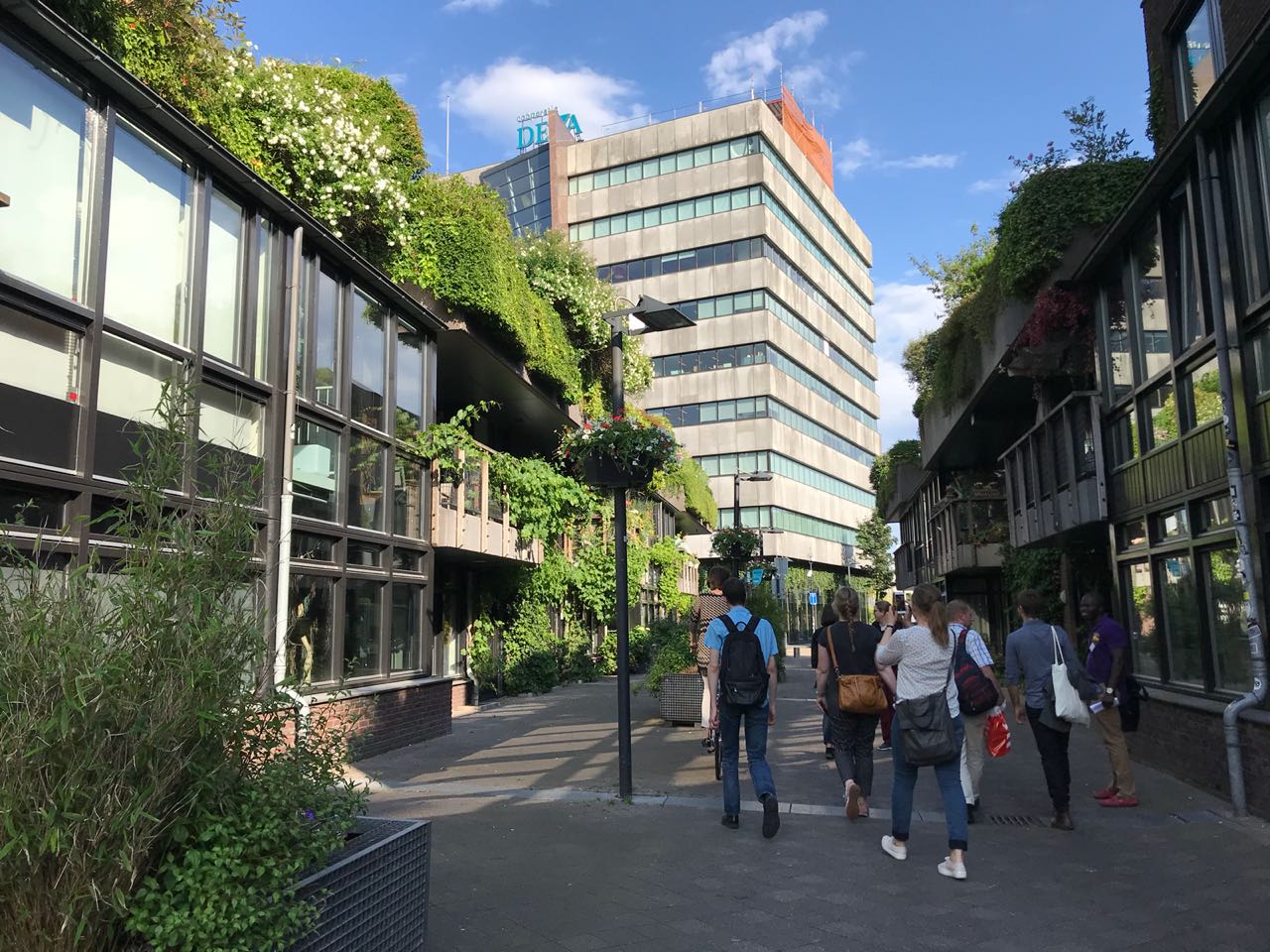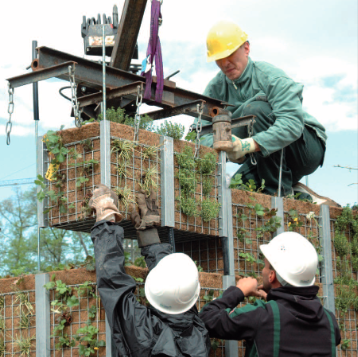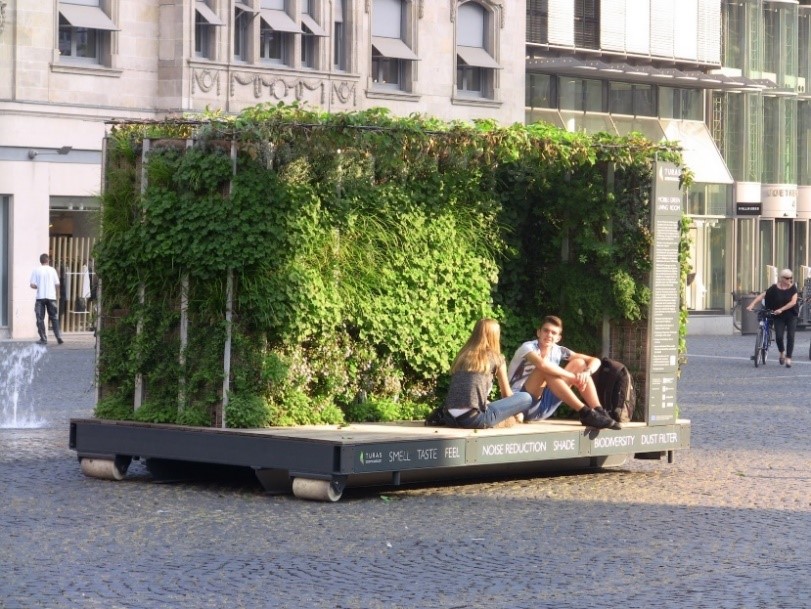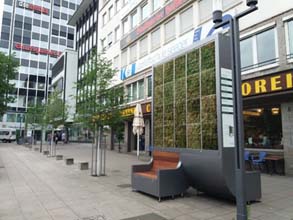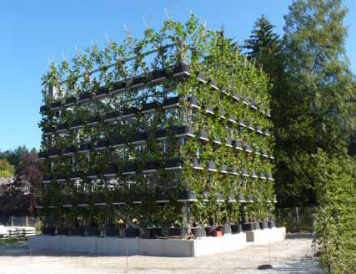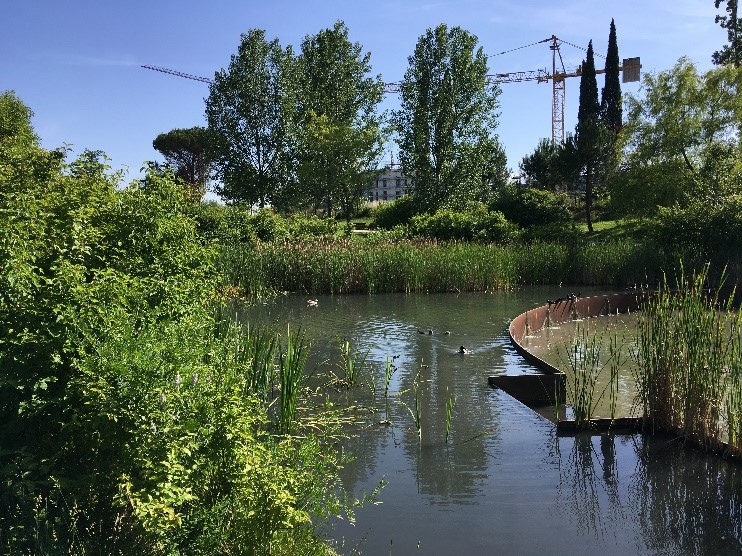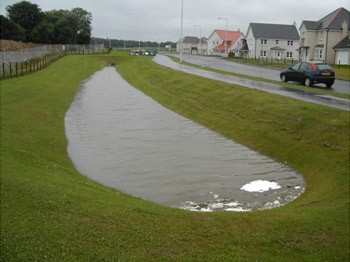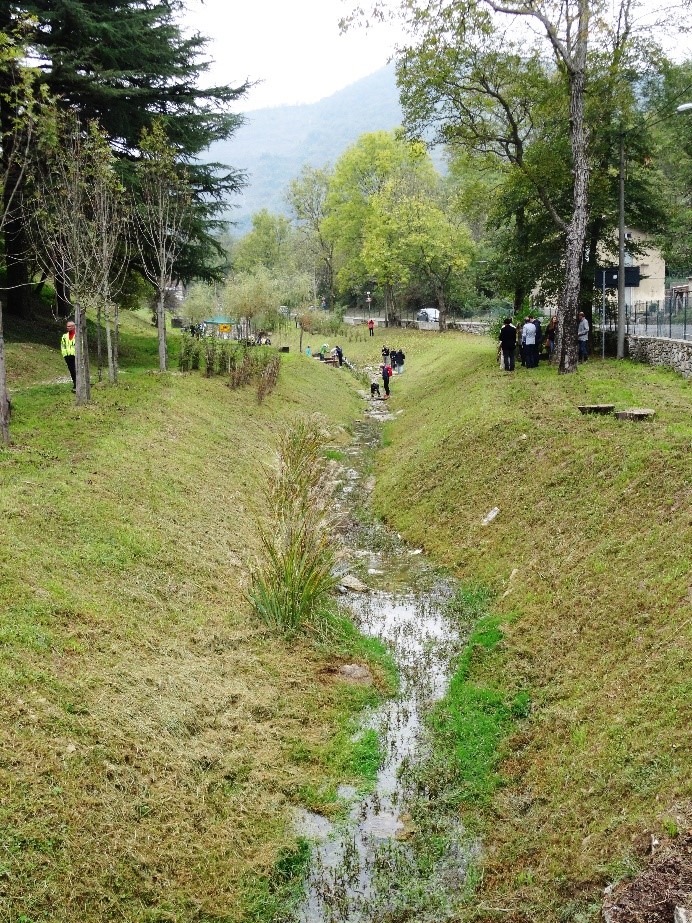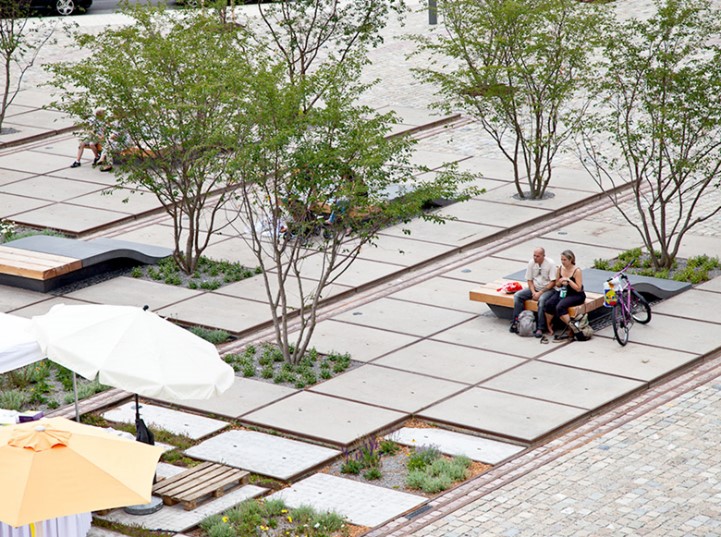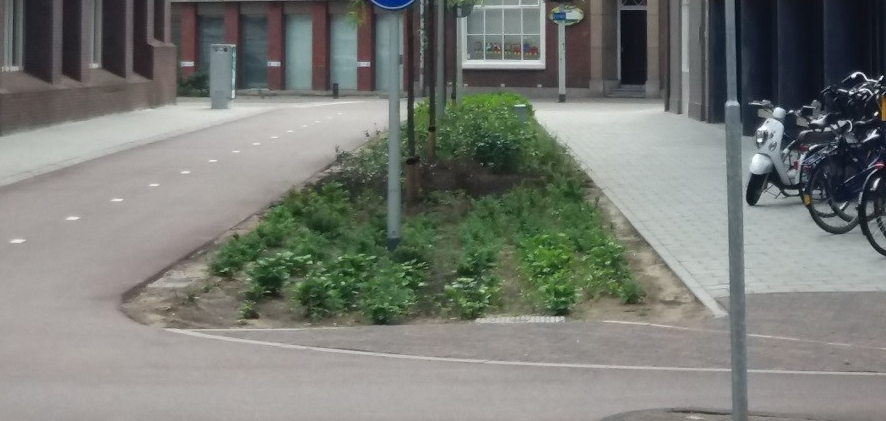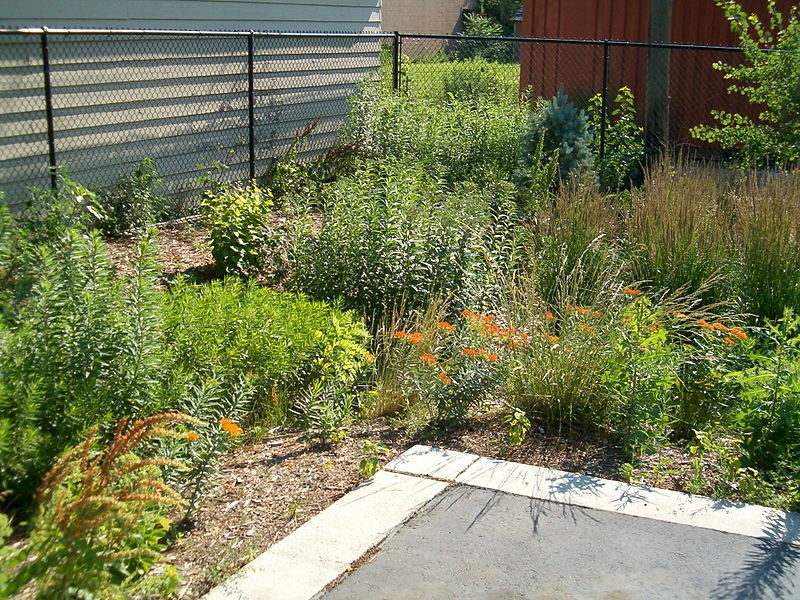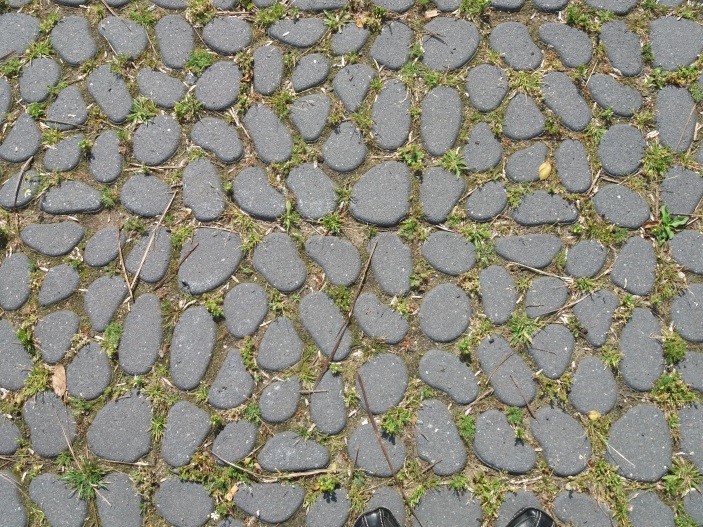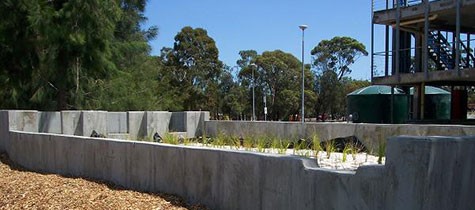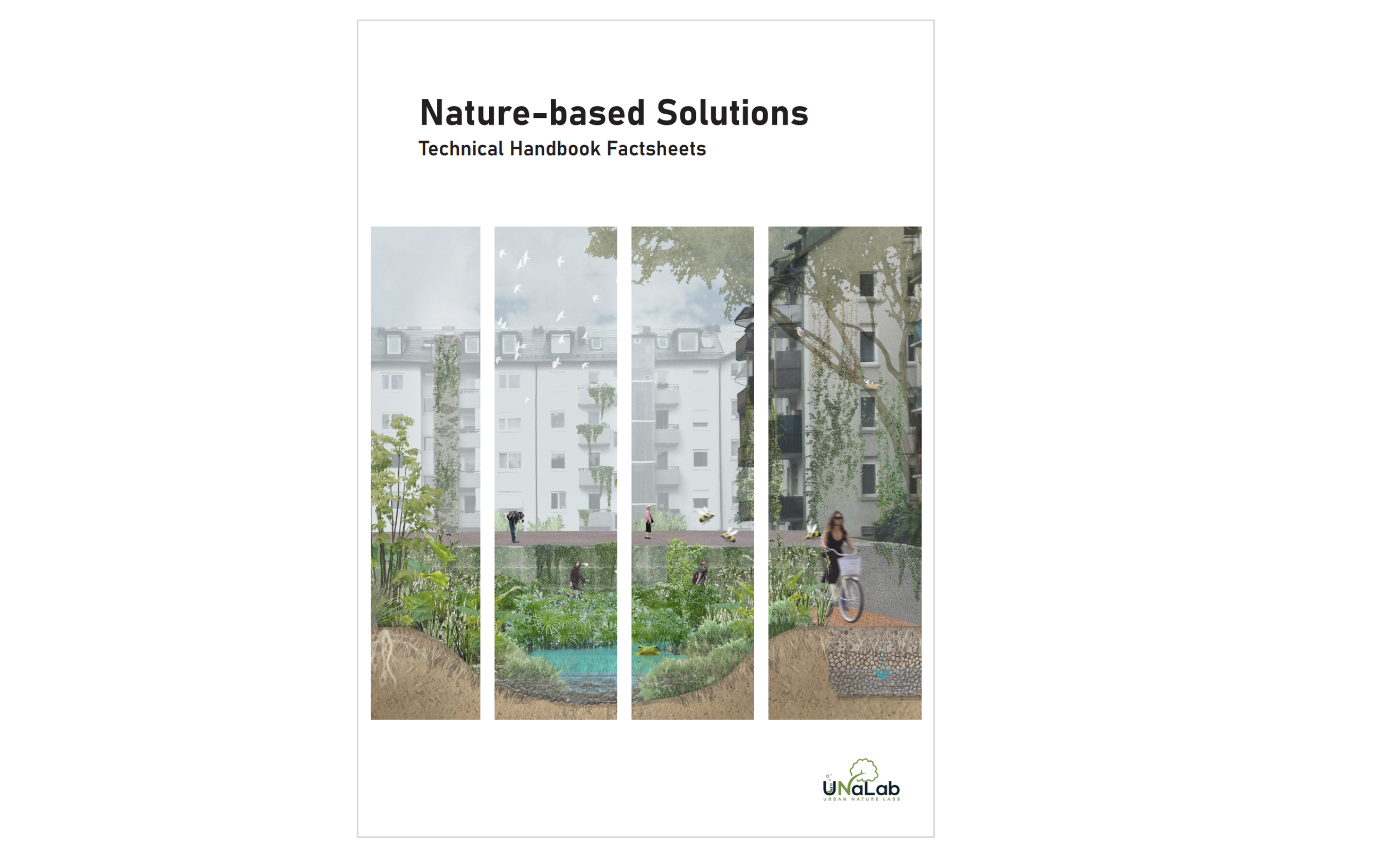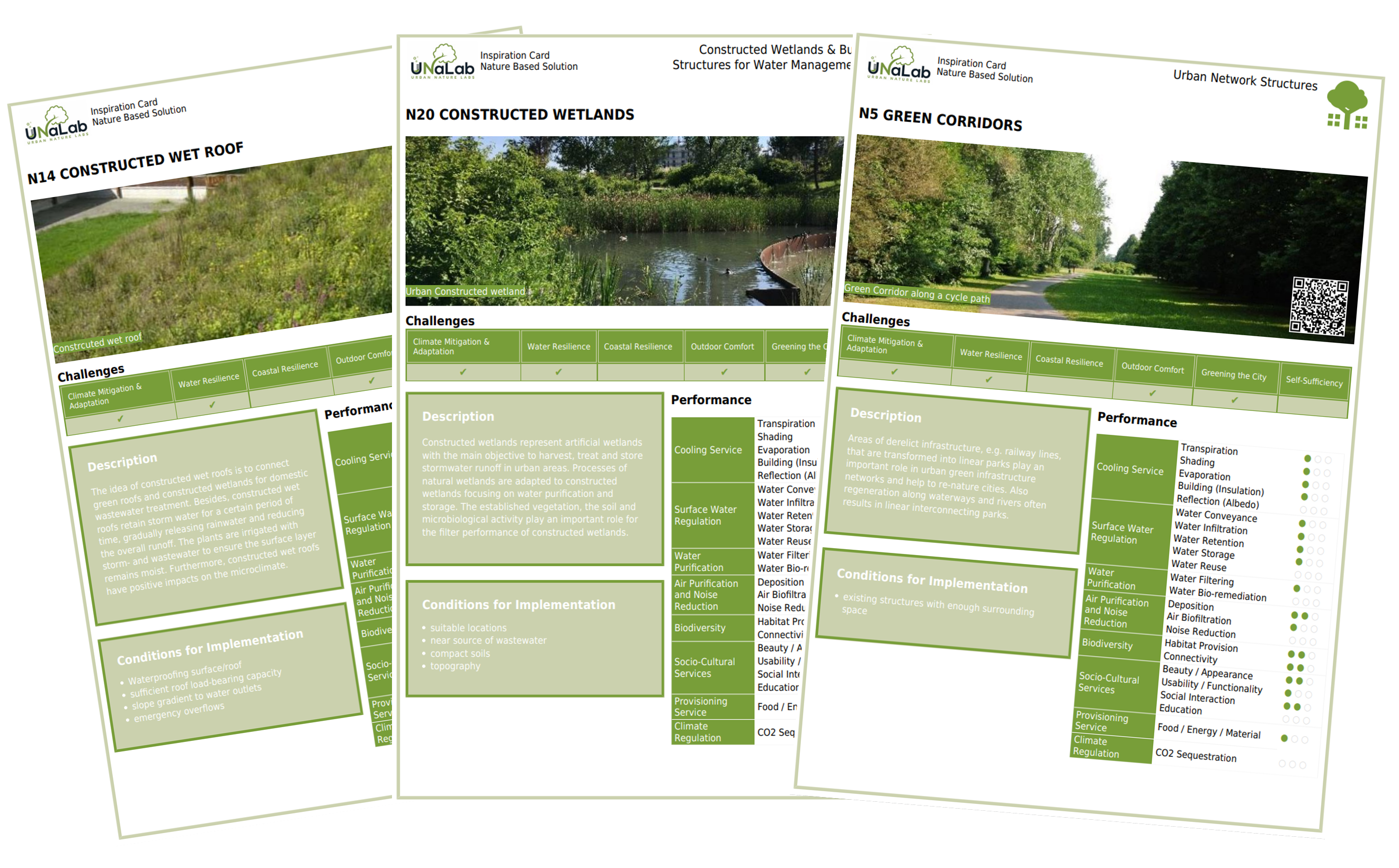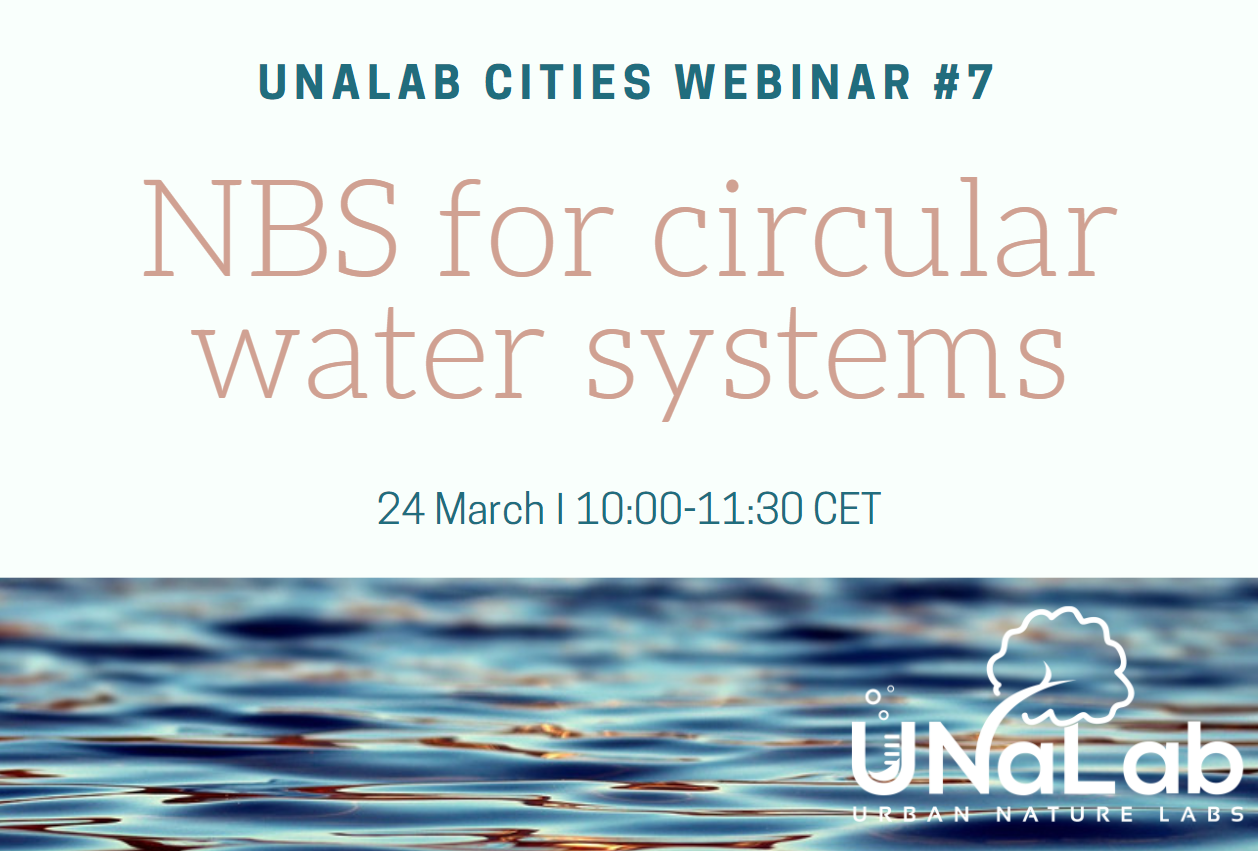Introduction
The NBS Technical Handbook focuses primarily on Type 3 Nature Based Solutions. Type 3 NBS involve the greatest amount of ecosystem intervention with highly intensive ecosystem management or the creation of new ecosystems. Type 3 NBS are further subdivided into seven main categories: (1) green space, (2) trees and shrubs, (3) soil conservation and quality management, (4) blue-green space establishment or restoration, (5) green built environment, (6) natural or semi-natural water storage and transport structures, and (7) infiltration, filtration and biofiltration structures. Explore these categories and select NBS below, or download the NBS Technical Handbook for more information.
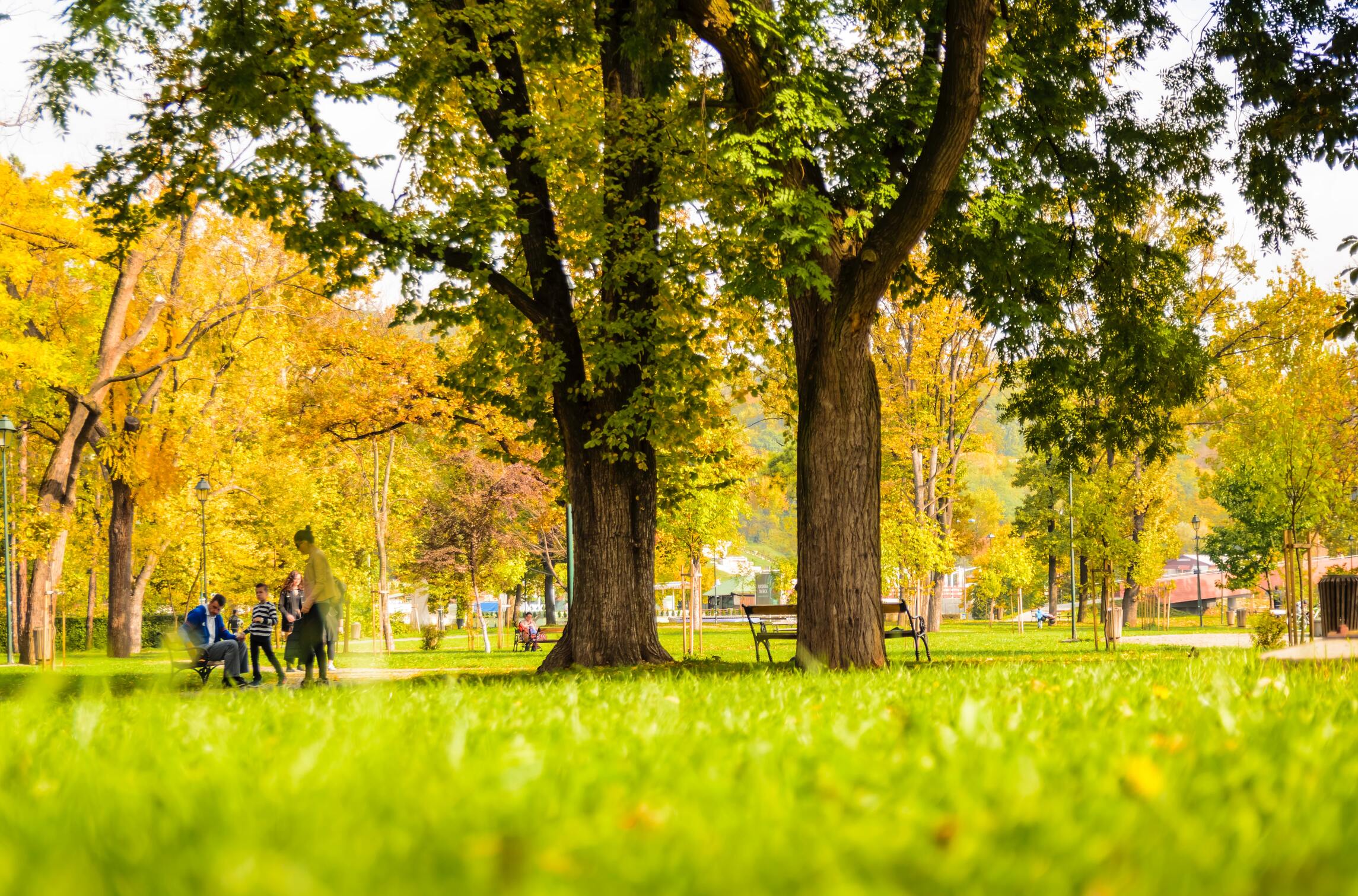
Green Space
The importance of rus in urbe (translated: country in the city) has been recognized since the ancient Romans began incorporating natural elements and green spaces into their cities for recreation and leisure. For many centuries, however, urban green spaces were largely private with restricted access. While some European cities began opening palace gardens to the general public in the 16th and 17th centuries, public green spaces were uncommon until the rise of the urban park in the 19th century. Although the design and objectives of parks have evolved over the past centuries, they remain a fundamental part of the urban green infrastructure and are an essential component of healthy and resilient cities. In an integrated system, often connected by tree lined streets or green corridors, green spaces serve as the backbone of urban green infrastructure and provide many beneficial services in cities including positive effects for urban climate, human health, recreation and biodiversity. Urban green spaces are categorized according to size, catchment area, services provided and urban design aspects. Three examples of green spaces (i.e. residential parks, green corridors and urban gardens) can be explored in more detail below.
Trees and Shrubs
Planting or protecting existing trees and shrubs are often employed in urban greening interventions and can be important NBS themselves, or elements within NBS. Some main benefits include the provision of habitat for urban wildlife, temperature and stormwater regulation, and mitigation of gaseous and particulate air pollutants. Urban trees may also be associated with human health benefits like the reduction of stress, obesity, cardiac disease and asthma. Larger, older trees generally have greater positive environmental effects in comparison to smaller, newly planted trees and therefore their conservation and professional maintenance should be prioritized.
Trees are often seen as “the nature solution” and there has been a recent push in many cities to increase tree plantings often in conjunction with lofty goals like planting one million trees. However, while urban trees offer many benefits, there are some potential disservices to consider. For example, some species may increase allergic symptoms in those with hay fever or produce compounds that can react to form ozone under certain conditions. Additionally, if planted without regard location, street trees can actually trap pollutants at the pedestrian-level in traffic-heavy areas. However, these disservices can be avoided with proper species selection and planning.
Single trees or shrubs are often not considered NBS themselves, because the positive effects of a single tree on the environment are usually local and limited to the immediate area near the tree. Examples of trees and shrubs as NBS in urban areas include orchards, vineyards, forests (including afforestation), hedges or green fences and street trees. Three examples of trees and shrubs as NBS (i.e single line street trees, boulevards and tree groups) can be explored in more detail below.
Soil Conservation and Quality Management
Soil, although often overlooked, is an important natural resource in urban areas. Soils support above and below ground biodiversity, increase storm water infiltration, improve water quality and can help regulate the microclimate. Additionally, soils mitigate climate change through carbon sequestration and the reduction of CO2, CH4 and N20 emissions. However, these benefits are reduced with common urban environmental stressors like pollution, erosion, compaction and sealing. As of 2015, it is estimated that about one-third of land is moderately to highly degraded due to stressors such as these. Additionally, the formation of just one centimeter of fertile soil can take hundreds of years making it a finite, non-renewable resource. Therefore the protection of existing soils through soil conservation and quality management is essential. Examples of NBS and actions that involve soil conservation and quality management include slope revegetation, permaculture, organic matter enrichment, establishing windbreaks, using conservation-based tillage practices and planting deep-rooted perennials. Three examples of NBS that are used to stabilize soil and prevent erosion (i.e. living fascine, revetment with cuttings and planted embankment mat) can be explored in more detail below.
Blue-Green Space Establishment or Restoration
Blue-green space establishment or restoration refers to vegetated areas of land near watercourses and waterbodies. These areas act as transition and buffer zones that can help to slow overland runoff, increase infiltration and stabilize soil at land-water interfaces, thereby reducing flood and erosion risk. These areas can also help improve water quality by filtering particulate materials. Furthermore, restored or newly established green-blue spaces provide habitat for wildlife and support biodiversity, while also offering social, recreational and educational benefits. Examples of NBS include restoration or establishment of riparian buffer zones, mangroves, saltmarshes or seagrasses, intertidal habitats and dune structures. Three examples (i.e. restoration of offshore habitat, setback levees and foreland development and restoration of mangroves, beaches and dunes) can be explored in more detail below.
Green Built Environment
The green built environment includes structural elements of the urban environment that incorporate vegetation into their design. This can include areas that were conventionally grey spaces like roof tops and facades. NBS in this category are diverse and examples include green roofs, green walls/facades, green alleys and parking lots and even small-scale or temporary structures like green living rooms. Additionally, elements of the same typology, for example green roofs, can be highly variable due to design and structural differences and selected species and growth media. Because of this diversity, there is a large range of benefits that can be supported by the green built environment including pollution mitigation, microclimate and stormwater regulation, biodiversity enhancement, as well as social and educational benefits. While smaller scale elements of the green built environment are beneficial on their own, potential benefits may be maximized when many of these NBS are integrated into a larger nature-based framework or masterplan focused on addressing urban environmental challenges. Examples of NBS as part of the green built environment (i.e. extensive and intensive green roofs, constructed wet roofs, smart roofs, green facades, free standing living walls, mobile green living rooms and moss walls) can be explored in more detail below.
Natural or Semi-natural Water Storage and Transport Structures
It is projected that many areas of Europe will experience both intensifying rainfall events and longer dry periods due to the effects of climate change. Indeed these trends have already been observed with the frequency and total amount of extreme rainfall increasing in Europe since 1950. Additionally, projections suggest large future increases of of extreme rainfall in parts of Europe. The negative consequences of these climate trends include not only increased risk of flooding with its associated risks of erosion and water pollution, but also drought. Traditional urban areas dominated by grey infrastructure may experience these challenges more intensely, for example with increased flood risk due to heavy runoff from sealed surfaces. Natural and semi-natural water storage and transport structures are natural or constructed waterbodies that help mitigate these challenges by reducing runoff flow, increasing retention capacity and reducing pollution by facilitating particulate settling. Additionally, these structures may provide a range of recreational opportunities for people and natural habitat for wildlife thereby enhancing biodiversity. Examples of NBS that are natural and semi-natural water storage and transport structures include surface wetlands, floodplains and floodplain reconnection with rivers, restoration of degraded waterbodies and waterways, and retention ponds. Four examples (i.e. constructed wetlands, retention- / (wet) detention ponds, daylighting and underground water storage) can be explored in more detail below.
Infiltration, Filtration and Biofiltration
The urban water cycle differs greatly form the natural water cycle with regard to the main components of evapotranspiration, water runoff and infiltration. This has severe consequences for the urban climate, groundwater recharge and risk management. These challenges are likely to increase as Europe is projected to experience more intense precipitation events in the future. Infiltration, filtration and biofiltration structures, as part of a water sensitive urban design or sustainable drainage system, can help mitigate these challenges. These green infrastructures are often areas that are usually dry (excluding during and after precipitation events) and that reduce peak flows by slowing surface runoff, increasing infiltration and providing water storage. They can also reduce pollutants in runoff water through natural physical, biological and chemical processes, allowing cleaner water to be discharged, collected or recharge groundwater. Depending on design, these structures may also support biodiversity by providing habitat for wildlife. Examples of NBS that are infiltration, filtration and biofiltration structures include infiltration basins, bioretention basins, rain gardens, bioswales, infiltration planters and subsurface constructed wetlands or filtration systems. Selected examples (i.e. bioswales, raingardens, infiltration basins, permeable paving systems and biofilters) can be explored in more detail below.
